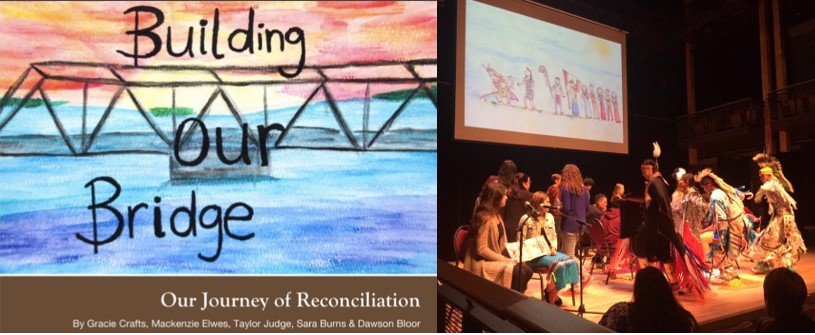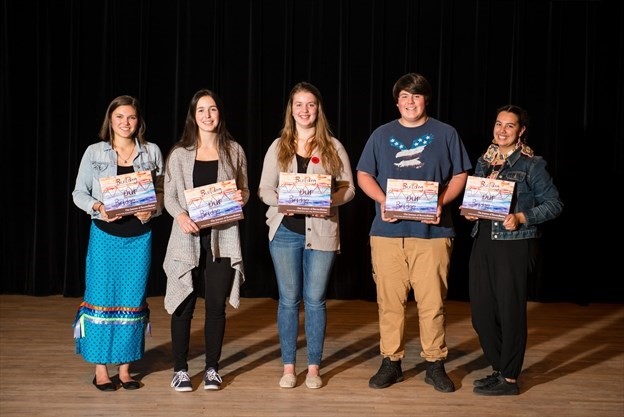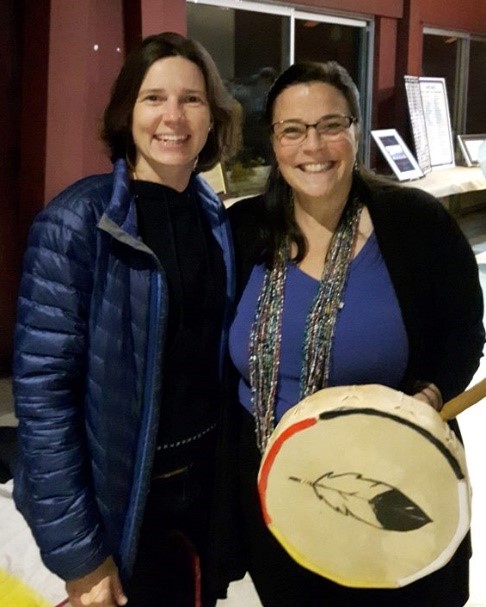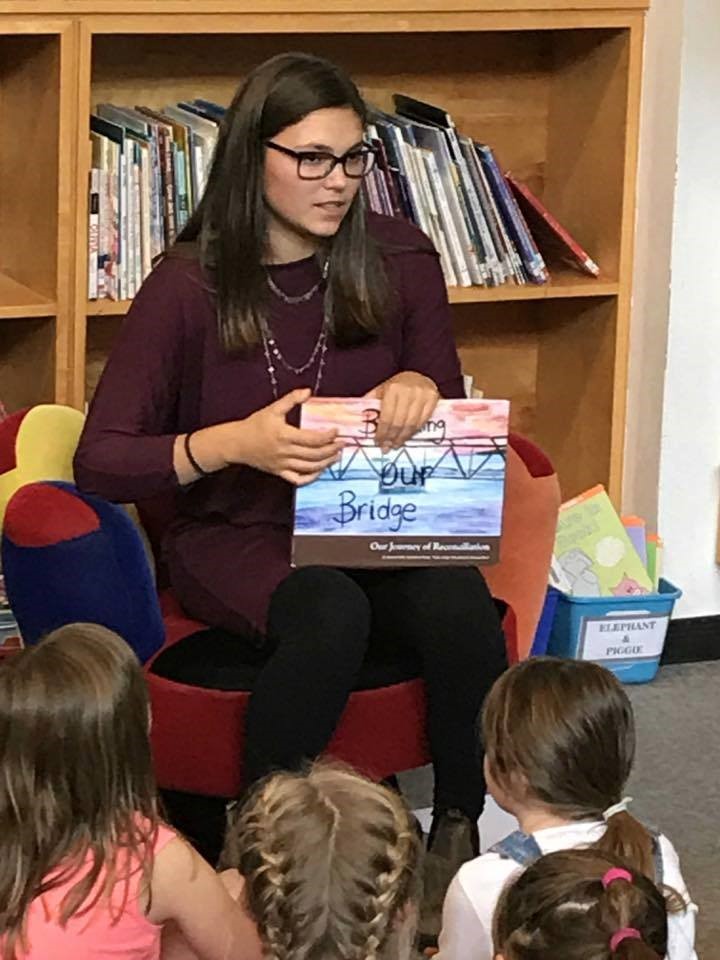
19 Nov A Youth Perspective on Reconciliation in the Georgian Bay Biosphere Reserve
It was a packed house in Parry Sound, Ontario on November 9, 2017; 225 people turned out to see local high school students perform their WE Innovate award-winning children’s book, Building Our Bridge: Our Journey of Reconciliation.
The Georgian Bay Biosphere Reserve (GBBR) sponsored the event, featuring strong youth leadership and a sharing of historical and current experiences through cultural dances and drumming.
Reconciliation in Canada refers to recognizing injustices against Indigenous peoples and their impacts, and committing to forging mutually-respectful relationships between Aboriginal and non-Aboriginal peoples.
What does a youth perspective of the process of reconciliation have to do with a UNESCO biosphere reserve’s mandate to promote conservation and sustainable livelihoods / development through research, education and training?
Globally, UNESCO sites are called to do their work through the lens of the 2007 United Nations Declaration on the Rights of Indigenous Peoples (UNDRIP), which Canada signed on to UNDRIP in 2016. Nationally, Canadian Biosphere Reserves responded to this call in June 2017 by adding reconciliation to their activities. In doing so, they recognize that successfully fulfilling their mandate requires an acknowledgement of the historical oppression of Indigenous peoples in Canada, and a commitment to respecting Indigenous cultures, knowledges and governance systems.
In the GBBR, the youth’s project is rooted in the idea that land-based education and cultural identity are critical for stewardship success.
“Conservation and stewardship in our community begins with a sense of place and caring for the land”, explained GBBR Executive Director, Becky Pollock. “By sharing Anishinabe (Ojibway) cultural perspectives about our connection to land and water in the only high school in our Biosphere Reserve, we advance a commitment to conservation in our community.”


Book presentation event (left) and student authors Gracie Crafts, Mackenzie Elwes, Sara Burns, Dawson Bloor, and Taylor Judge (right). Photos: Meg Wallace Photography
Indigenous and “mainstream Canadian” students wrote about conserving cultural traditions such as honouring the land and different knowledges, and about reconciling traditional and Western cultures as a step toward healing and the relationship-building that underpins the GBBR’s community conservation and livelihoods initiatives.
The video compilation of the reading and performance is being edited and produced by youth at Parry Sound High School for public viewing soon, with sponsorship from CCRN.

 Right: Student author Gracie Crafts reads to 700 elementary school children in Parry Sound.
Right: Student author Gracie Crafts reads to 700 elementary school children in Parry Sound.
Left: Project supporters Dr. Becky Pollock (GBBR) and teacher Patti Jenkins (Parry Sound High School)
Photo credits unless otherwise stated: Georgian Bay Biosphere Reserve on Facebook
Information in this post was provided by CCRN researcher Sharmalene Mendis-Millard, with thanks to Becky Pollock


